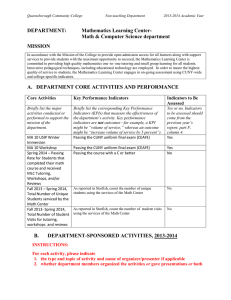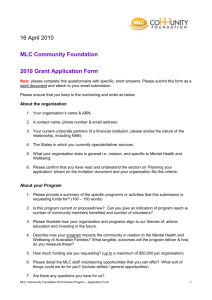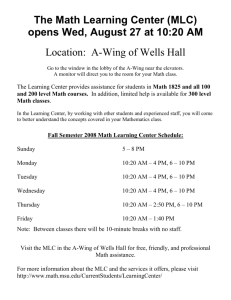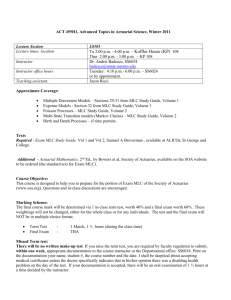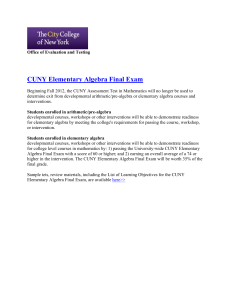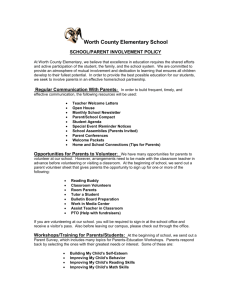Mathematics Learning Center
advertisement
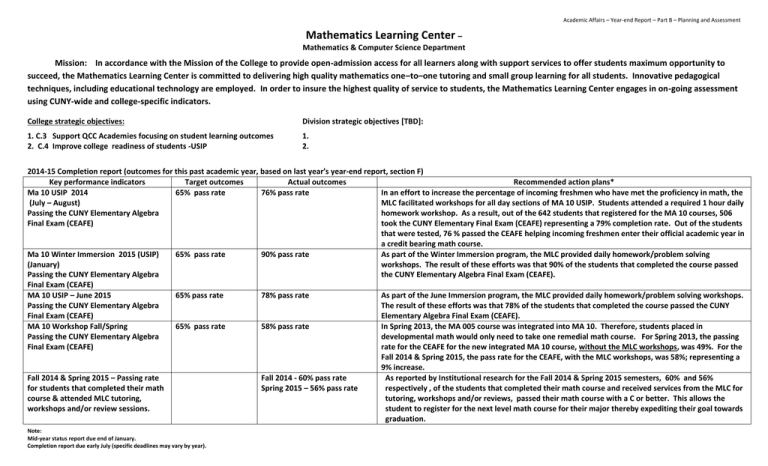
Academic Affairs – Year-end Report – Part B – Planning and Assessment Mathematics Learning Center – Mathematics & Computer Science Department Mission: In accordance with the Mission of the College to provide open-admission access for all learners along with support services to offer students maximum opportunity to succeed, the Mathematics Learning Center is committed to delivering high quality mathematics one–to–one tutoring and small group learning for all students. Innovative pedagogical techniques, including educational technology are employed. In order to insure the highest quality of service to students, the Mathematics Learning Center engages in on-going assessment using CUNY-wide and college-specific indicators. College strategic objectives: Division strategic objectives [TBD]: 1. C.3 Support QCC Academies focusing on student learning outcomes 2. C.4 Improve college readiness of students -USIP 1. 2. 2014-15 Completion report (outcomes for this past academic year, based on last year’s year-end report, section F) Key performance indicators Target outcomes Actual outcomes Recommended action plans* Ma 10 USIP 2014 65% pass rate 76% pass rate In an effort to increase the percentage of incoming freshmen who have met the proficiency in math, the (July – August) MLC facilitated workshops for all day sections of MA 10 USIP. Students attended a required 1 hour daily Passing the CUNY Elementary Algebra homework workshop. As a result, out of the 642 students that registered for the MA 10 courses, 506 Final Exam (CEAFE) took the CUNY Elementary Final Exam (CEAFE) representing a 79% completion rate. Out of the students that were tested, 76 % passed the CEAFE helping incoming freshmen enter their official academic year in a credit bearing math course. Ma 10 Winter Immersion 2015 (USIP) 65% pass rate 90% pass rate As part of the Winter Immersion program, the MLC provided daily homework/problem solving (January) workshops. The result of these efforts was that 90% of the students that completed the course passed Passing the CUNY Elementary Algebra the CUNY Elementary Algebra Final Exam (CEAFE). Final Exam (CEAFE) MA 10 USIP – June 2015 65% pass rate 78% pass rate As part of the June Immersion program, the MLC provided daily homework/problem solving workshops. Passing the CUNY Elementary Algebra The result of these efforts was that 78% of the students that completed the course passed the CUNY Final Exam (CEAFE) Elementary Algebra Final Exam (CEAFE). MA 10 Workshop Fall/Spring 65% pass rate 58% pass rate In Spring 2013, the MA 005 course was integrated into MA 10. Therefore, students placed in Passing the CUNY Elementary Algebra developmental math would only need to take one remedial math course. For Spring 2013, the passing Final Exam (CEAFE) rate for the CEAFE for the new integrated MA 10 course, without the MLC workshops, was 49%. For the Fall 2014 & Spring 2015, the pass rate for the CEAFE, with the MLC workshops, was 58%; representing a 9% increase. Fall 2014 & Spring 2015 – Passing rate Fall 2014 - 60% pass rate As reported by Institutional research for the Fall 2014 & Spring 2015 semesters, 60% and 56% for students that completed their math Spring 2015 – 56% pass rate respectively , of the students that completed their math course and received services from the MLC for course & attended MLC tutoring, tutoring, workshops and/or reviews, passed their math course with a C or better. This allows the workshops and/or review sessions. student to register for the next level math course for their major thereby expediting their goal towards graduation. Note: Mid-year status report due end of January. Completion report due early July (specific deadlines may vary by year). Academic Affairs – Year-end Report – Part B – Planning and Assessment Fall 2014 – Spring 2015, Total number of unique students served by the Math Center Fall 2014 – Spring 2015, Total number of student visits for tutoring, workshops and reviews 6, 208 unique students As reported by IR from the Starfish data collection, the MLC served 6,208 unique students for tutoring, workshops and review sessions. 78,450 visits As reported by IR from the Starfish data collection, the MLC fulfilled 78,450 requests for tutoring, workshops and reviews. 2015-16 Department strategic plan (arranged by each division strategic objective that the department supports) College strategic objectives Support QCC Academies focusing on student learning outcomes Support QCC Academies focusing on student learning outcomes Improve college readiness of students -USIP Notes Department strategic objectives Increase the overall pass rate for tutored students that completed their math course. Increase the overall math course completion rate for students that attended MLC tutoring, workshops and review sessions. Increase the pass rate of PreCollege programs, USIP, in math to improve college readiness. Indicator(s) Expected outcomes Passing the course with a C or better 50% pass rate Receiving a grade for the course (not including W or Wu) 65% course completion rate Passing the CUNY Elementary Algebra Final Exam 65% pass rate Action plan/timeline Who Actual outcomes The MLC will continue to deliver high quality tutoring, workshops and review sessions to support students’ academic goals. The Center provides ongoing training to ensure that the tutors and workshop leaders are skilled at facilitating one-to-one and small group sessions. In an effort to increase retention rates, the MLC will continue to support students’ academic needs so that they persist in their course work. MA 10 USIP will be supported by the MLC with a 1 hour daily homework / problem solving workshop. Add tables for additional division strategic objectives and corresponding department strategic objectives, as needed. For each division strategic objective, the department should have one or more strategic objectives intended to support that department in the achievement of the division objective. Each department strategic objective should have at least one indicator (key performance indicator) and one expected outcome, with an action plan and timeline to achieve that outcome. At the mid-year point, the department reports partial or preliminary outcomes. At the end of the year, the department reports actual outcomes. An indicator is the measurement by which the objective will be assessed. The outcome is the product of the work in support of achieving the objective. For example, if the strategic objective for Admissions is “to expand feeder high schools,” the indicator might be “applications received from new feeder high schools,” and the expected outcome might be “at least one application from five new feeder high schools.” Note: Mid-year status report due end of January. Completion report due early July (specific deadlines may vary by year).
